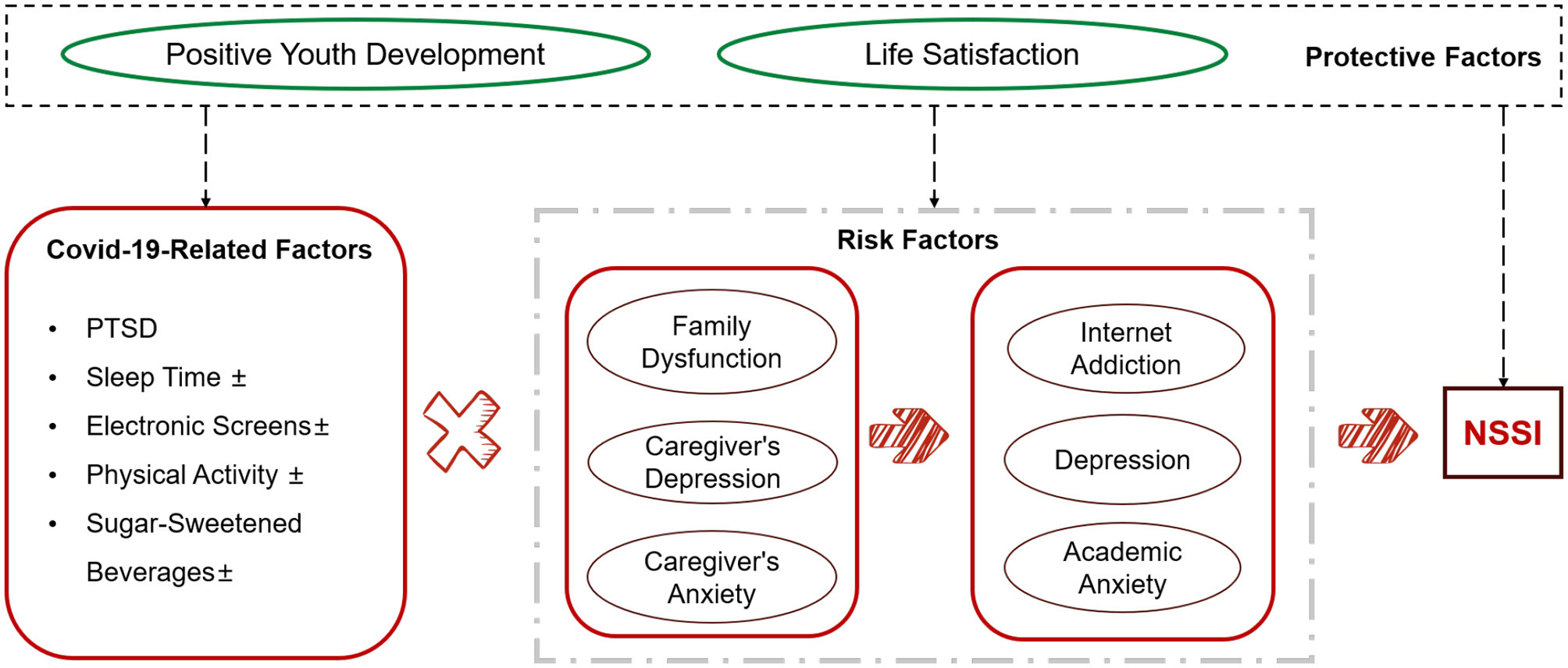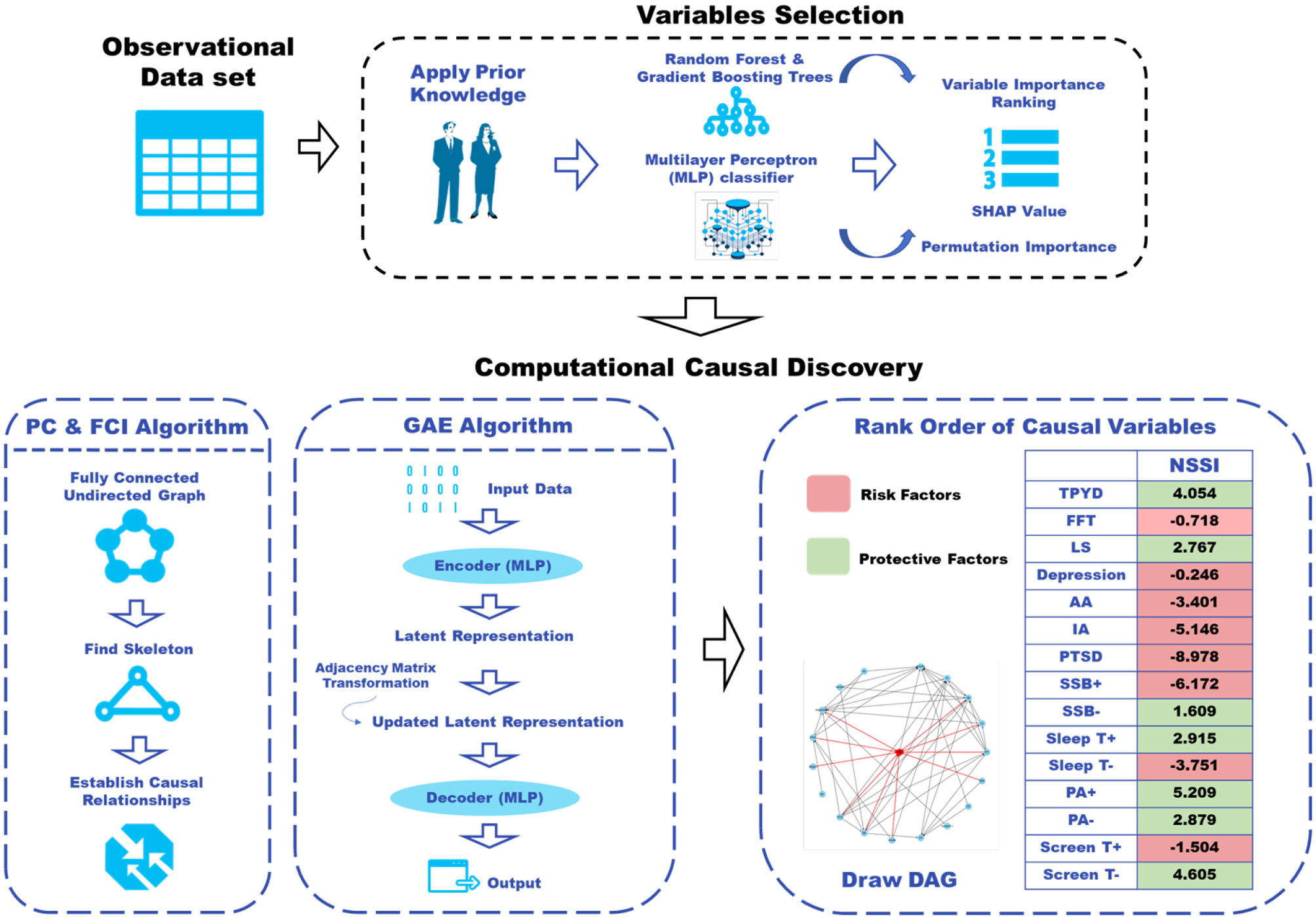Computational causality to discover factors and pathways of NSSI in children
Insights from computational causal analysis on the factors contributing to non-suicidal self-injury in children.
Overview
This project explores the factors and pathways leading to non-suicidal self-injury (NSSI) in children using computational causal analysis. The research integrates machine learning and causal inference methods to uncover the intricate causal relationships behind NSSI behaviors, with a specific focus on the COVID-19 pandemic’s impact.

NSSI comprehensive hypothetical framework.
Methodology
- Data Source: Chengdu Positive Child Development (CPCD) survey, a school-based longitudinal study with 5,807 participants aged 6–16 years.
- Techniques Used:
- Causal Discovery: PC, FCI, and Graphical Autoencoder (GAE) methods.
- Directed Acyclic Graph (DAG): Visualized causal relationships influencing NSSI.
- Data Preprocessing:
- Standardized numerical features.
- Encoded categorical variables for causal model compatibility.

The Directed Acyclic Graph (DAG) showcasing key causal relationships influencing NSSI during the COVID-19 pandemic.
Key Contributions
Highlights:
- Causal Discovery: Applied PC, FCI, and GAE methods to identify nine pivotal factors directly related to NSSI.
- COVID-19 Impact: Analyzed the role of pandemic-induced changes in behavior and mental health.
- Intervention Strategies: Identified key pathways for targeted prevention and intervention.
Direct Causes Identified:
- Life satisfaction
- Depression
- Family dysfunction
- Sugary beverage consumption
- Positive Youth Development (PYD)
- Internet addiction
- COVID-19-related PTSD
- Academic anxiety
- Sleep duration
Four Principal Pathways:
- Lockdown-induced lifestyle changes increasing academic anxiety and internet addiction.
- Enhanced screen time and sugary beverage consumption linked to depression.
- PYD buffering adverse effects of family dysfunction on NSSI.
- Family dysfunction reducing life satisfaction and fostering depression.
Results
- Prevalence:
- 26.27% of children reported engaging in NSSI within the past year.
- Female students (27.75%) had a higher NSSI rate than male students (24.82%).
- Key Findings:
- Lockdowns disrupted sleep and physical activity patterns, heightening academic stress.
- Positive Youth Development emerged as a protective factor, mitigating NSSI risk.